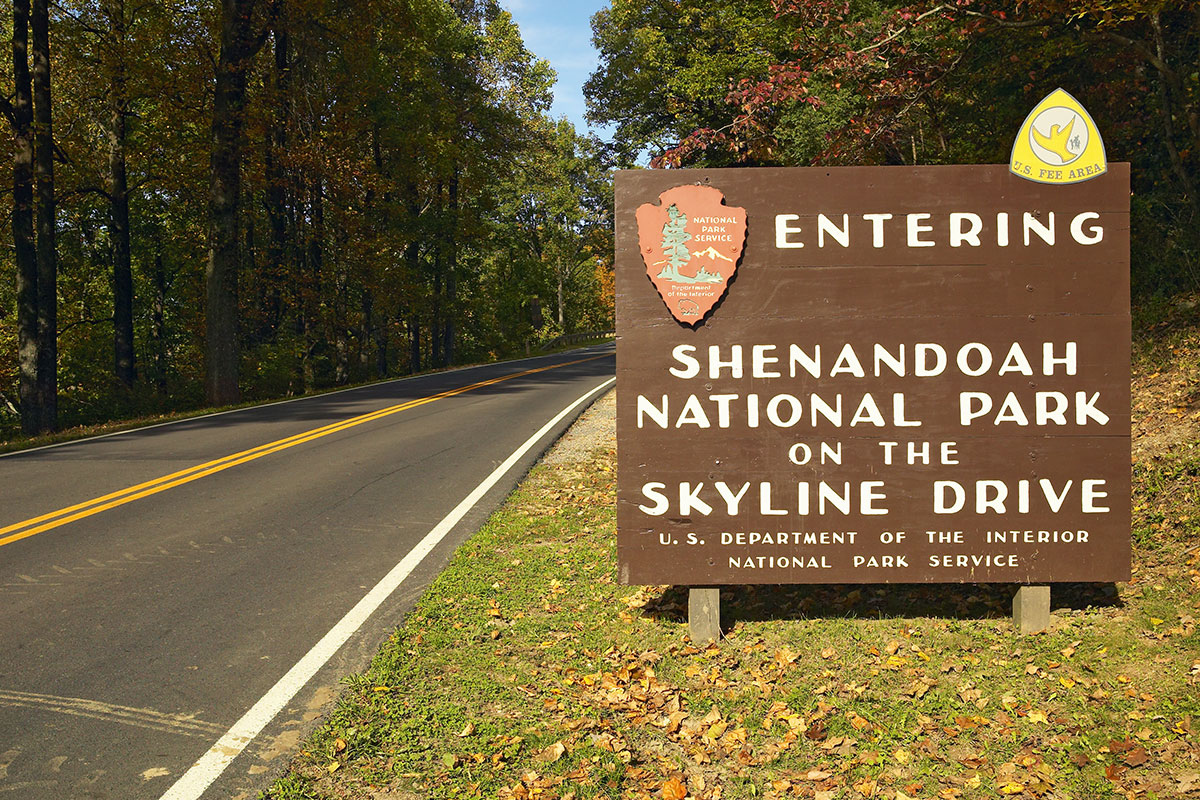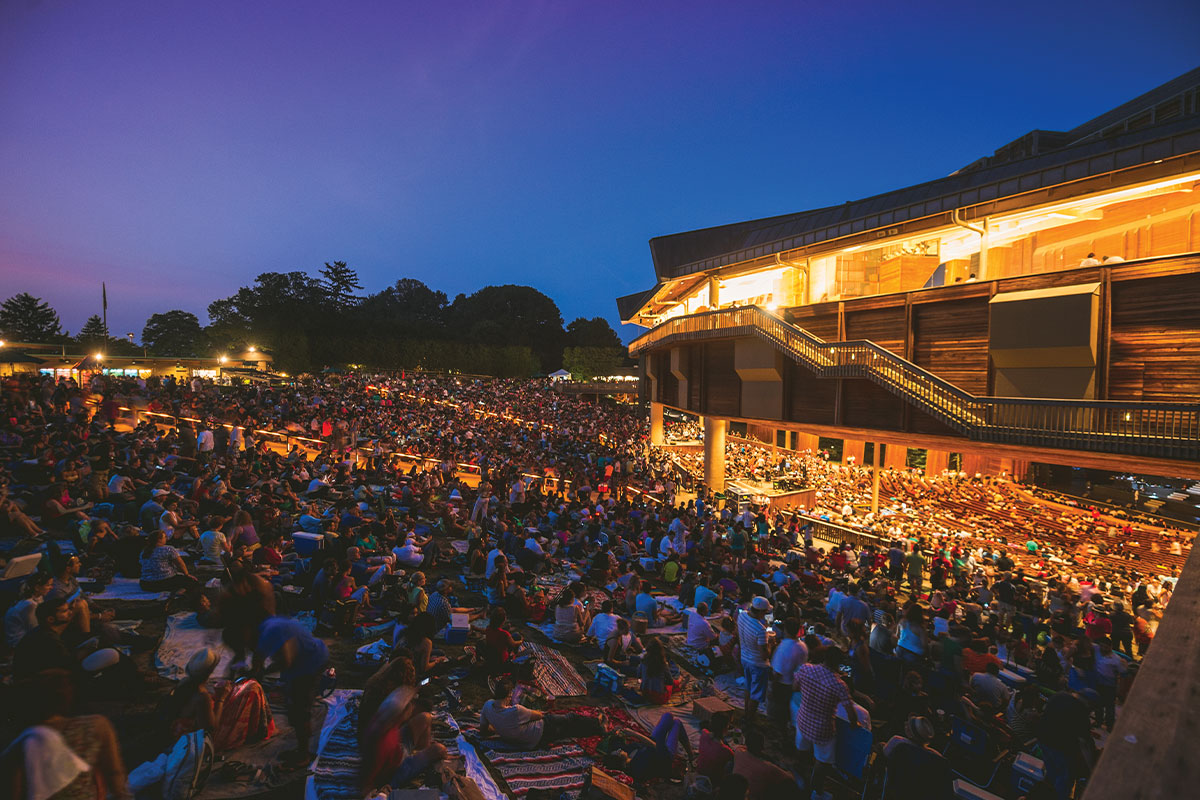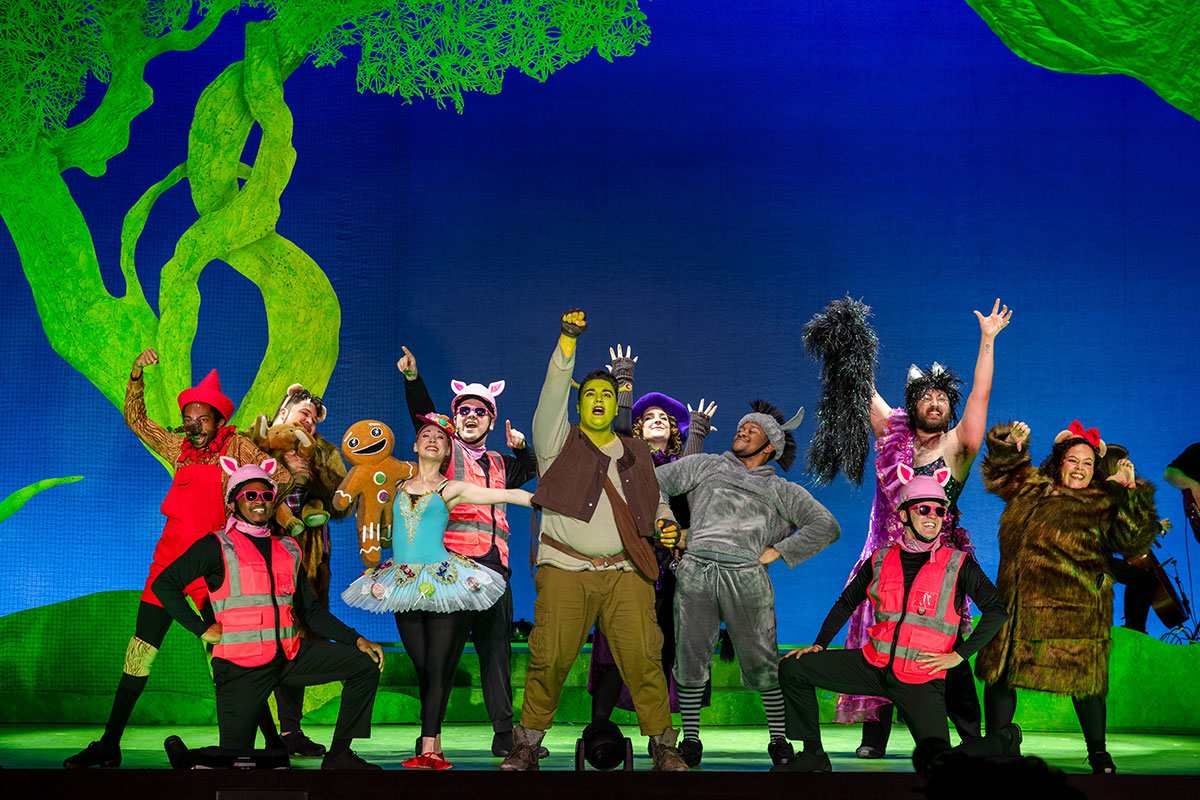
Have no fear, there’s a park ranger near.
Most often recognized by their uniforms, with flat-bill hats and tan button-up shirts (with a National Parks Service patch on the left arm, of course), park rangers are responsible for everything from visitor center management and hiking tours to general first aid and environmental research.
They’re the ones to ask when you have a directional question, a nature inquiry or are looking to know all of the ins and outs that a local park has to offer. That’s why we spoke with Maria Lavender, supervising park ranger at Shenandoah National Park. Lavender has over 20 years of experience in the NPS, which started at Big Bend National Park in Texas and eventually brought her to Shenandoah. Highlights from our conversation are below.
How did you get started working as a park ranger?
My college degree was in environmental education, so I was looking for a position that included outdoor education, resource space and educational opportunities for others, so I accepted a student conservation internship at Big Bend National Park. I had been to a couple national parks before but didn’t have my sights set on being a park ranger. It just seemed like a really fun opportunity to spend three months in a national park doing environmental education. The rest is history. From there I started working seasonally until I became a full-time, year-round, permanent employee about 10 years later. Now I’ve done a variety of jobs at the National Park Service and I have always been making my way back to park interpretation and education, since that’s where my heart has been. But I’ve done a lot of odds-and-ends jobs that were really fun along the way. For example, I worked in the back country for nine days at a time. That was a really fun few years of my life, but I’ve worked to really get back to talking and sharing parks with people. Park education and interpretation is really what makes my socks go up and down.
You currently oversee a large group of park rangers. What does your schedule look like, as well as the other rangers’ schedules, tend to look like each day?
Well, the job of a park ranger is definitely one that is variable. You might have a plan, but you need to be flexible because the whole plan could change when you show up to work, according to the conditions. Since I am a supervisory ranger now, I run the visitor center and I have a staff that do a lot of the programming and stuff that I used to do. So my days usually have more office time than my staff, which are definitely more field-based. I typically spend some time in the visitor center as well, and I will go out to my staff’s programs and coach them to make sure they’re offering a good program to the visitors. And when I get a chance, I’ll also do some hiking in uniform to contact people or look for wildlife, explore and be more familiar with Shenandoah National Park. As for interpretive park rangers (the ones out in the field), they typically work in the visitor’s center and conduct programs at campground amphitheaters, guided hikes, and, at some parks, we’re the ones doing guided cave tours and junior ranger activity programs. So as a ranger, you might open up the visitor center and work a few hours behind the front desk, giving out a whole bunch of information such as safety messaging, giving people directions and answering questions about what is that insect, what’s that bird, you know, that kind of stuff. And then in the afternoon, a ranger could do a quick talk on the patio or in the field for 20 to 30 minutes where they’ll talk about a special thing that Shenandoah has, or they might go on a guided walk where they’ll take visitors out for a couple of miles and impart knowledge on a specific trail or topic. We also have evening programs.
And what are some other activities that visitors might not think of that a park ranger does?
Say there’s a bear on a trail or trash left behind in the picnic area, or really intense weather storms that come up here, then we all have to kind of drop what we’re doing and manage that, the situation or the incident. We get a lot of folks that come into the visitor center to tell us that someone in their group has been lost or is injured and we’ll drop everything and cover just the basics at the visitor’s center and then attend to that issue. The crazy weather storms up here can sometimes cause flooding in the visitor’s center or down trees on trails or roads, so we drop everything to make sure we can secure the building and that people are aware of hazards that might keep them from coming and going. However, when folks come into the visitor’s center to tell us that their friend or family member is hurt, injured or lost, we use radio communications to get law enforcement involved and we send the search and rescue teams out to those areas. And some of the park ranger staff are cross-trained for emergency medical response, too. During the busy season (such as spring and early fall), park rangers, the search and rescue teams and law enforcement are notified of something almost every day. But it’s part of being in the wilderness, you know? It’s part of the adventure.
What should visitors do to be prepared when visiting a national park?
It’s very helpful when visitors come with their 10 essentials, which is a message that we’re constantly sending at the visitor centers and to the search and rescue staff so that we can talk to folks about how to be prepared for the unknown. The 10 essentials (and you can find different versions online), include navigation, so a map and compass, or GPS system. I say have both just in case you don’t have cell service. Sun protection, meaning sunscreen, sunglasses and a hat, insulation, such as a jacket, hat, gloves, illumination, such as a flashlight or headlamp, first-aid kit, something to start an emergency fire with (matches, a lighter, etc.), repair kit and tools (I usually recommend a small tactile knife), nutrition (bring snacks!) and hydration, always have water with you. Some people might not think to bring all of those things, and then some people don’t bring all of those things because it’s a 1-mile, family-friendly walk, but if you’re getting into the 5-plus miles range, you really need to be thinking about those 10 essentials.
What’s your favorite part about being a park ranger in the NPS?
My favorite part about my job right now is helping other park rangers have a great season and find a future in public lands management. I really like helping new park rangers find their special role in NPS because we have a ton of folks that are nearing retirement soon, and this next generation of park rangers are going to help bring us into people’s lives in the future. And, of course, the other thing that I don’t get to do very often is take a hike in uniform. I love when I stumble upon somebody who didn’t think there would be a park ranger there and they have all kinds of questions. Sometimes it’s like, “Is there a restaurant on the trail?” and other times they’re like, “What’s this bug? I saw this leaf …” and we get opportunities that are really informal and off the cuff and it’s really awesome to just actually be in the park with people. My husband and I are both employed by NPS and we have two young toddler boys, so that’s what we do with our kids too. We strap them on our backpacks and we go hiking. That’s my favorite way to exercise and be able to stretch my legs, while also stumbling upon people in uniform. It’s just the best.
What would you want to tell readers about NPS and enjoying time outdoors in NoVA?
There is a beautiful place right out your back door. You can drive it, you can hike it and there’s something for everyone here, really. So why not come out and see it? Also, fall can be incredibly beautiful, but incredibly busy. So, if you’re planning on coming to Shenandoah during our fall colors, which typically peak in October, I highly recommend it, but I also recommend trying to skip the middle of the day and the weekends, if possible. That way, you’ll be able to see more trees instead of just bumpers and taillights.
Want to stay up to date with all of Parks & Rec experiences in NoVA? Subscribe to our semimonthly newsletter to have it sent directly to your inbox.




